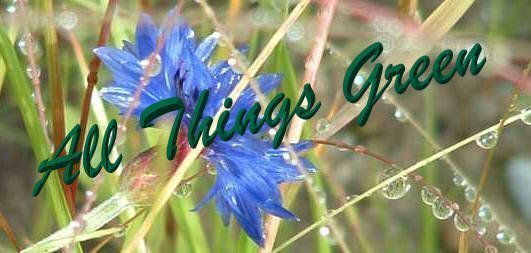|
|
|
Reduce, Reuse, and Recycle
Reduce, Reuse,
and Recycle
Produce Less Waste by Practicing
the 3 Rs:
- Reduce the amount
and toxicity of trash you discard.
- Reuse containers and
products; repair what is broken or give it to someone who can repair
it.
- Recycle as much as
possible, which includes buying products with recycled content.
Waste prevention, or "source reduction," means
consuming and throwing away less. It includes:
- purchasing durable, long-lasting goods;
- seeking products and packaging that are as free
of toxics as possible;
- redesigning products to use less raw material in
production, have a longer life, or be used again after its original
use.
Waste prevention, also know as "source reduction," is
the practice of designing, manufacturing, purchasing, or using materials
(such as products and packaging) in ways that reduce the amount or
toxicity of trash created. Reusing items is another way to stop waste at
the source because it delays or avoids that item's entry in the waste
collection and disposal system.
Source reduction, including reuse, can help reduce
waste disposal and handling costs, because it avoids the costs of
recycling, municipal composting, landfilling, and combustion. Source
reduction also conserves resources and reduces pollution, including
greenhouse gases that contribute to global warming.
From
http://www.epa.gov/epaoswer/non-hw/muncpl/reduce.htm#reduce
Reusing items -- by repairing them, donating them to
charity and community groups, or selling them -- also reduces waste.
Reusing products, when possible, is even better than recycling because
the item does not need to be reprocessed before it can be used again.
Ways to Reuse
- Using durable coffee mugs.
- Using cloth napkins or towels.
- Refilling bottles.
- Donating old magazines or surplus equipment.
- Reusing boxes.
- Turning empty jars into containers for leftover
food.
- Purchasing refillable pens and pencils.
- Participating in a paint collection and reuse
program.
From
http://www.epa.gov/epaoswer/non-hw/muncpl/reduce.htm#reduce
Recycling turns materials that would otherwise become
waste into valuable resources. In addition, it generates a host of
environmental, financial, and social benefits. Materials like glass,
metal, plastics, and paper are collected, separated and sent to
facilities that can process them into new
materials or products.
Recycling is one of the best environmental success
stories of the late 20th century. Recycling, including
composting, diverted 79 million tons of
material away from landfills and incinerators in 2005, up from 34
million tons in 1990. By 2002, almost 9,000 curbside collection programs
served roughly half of the American population. Curbside programs, along
with drop-off and buy-back centers, resulted in a diversion of about 32
percent of the nation's solid waste in 2005
Benefits of
Recycling
- Conserves resources for our children's future.
- Prevents emissions of many greenhouse gases and
water pollutants.
- Saves energy.
- Supplies valuable raw materials to industry.
- Creates jobs.
- Stimulates the development of greener
technologies.
- Reduces the need for new landfills and
incinerators.
From
http://www.epa.gov/epaoswer/non-hw/muncpl/reduce.htm#reduce
Buying
Recycled
Creating a strong market for recycled products
is key to completing the recycling process or "closing the
loop." Consumers close the loop when they purchase products made
from recycled materials. Governments can promote buying recycled
products through their own purchasing programs and guidelines.
Manufacturers can participate as well by using recycled
materials in their products.
Identifying Recycled-Content Products
Product labels can be confusing to consumers
interested in buying recycled because of the different recycling
terminology used. The following definitions might help clarify
any uncertainty regarding manufacturers' claims. For more
detailed guidance, view a summary of the Federal Trade
Commission's brochure entitled
Sorting Out Green Advertising Claims or the
Agency's
Official Guidance for the use of environmental
marketing claims.
- Recycled-content products
are made from materials that would otherwise have been
discarded. Items in this category are made totally or
partially from material destined for disposal or recovered
from industrial activities-like aluminum soda cans or
newspaper. Recycled-content products also can be items that
are rebuilt or remanufactured from used products such as
toner cartridges or computers.
- Postconsumer content
refers to material from products that were used by consumers
or businesses and would otherwise be discarded as waste. If
a product is labeled "recycled content," the rest of the
product material might have come from excess or damaged
items generated during normal manufacturing processes-not
collected through a local recycling program.
- Recyclable products
can be collected and remanufactured into new products after
they've been used. These products do not necessarily contain
recycled materials and only benefit the environment if
people recycle them after use. Check with your local
recycling program to determine which items are recyclable in
your community.
A Recycled
Products Shopping List
There are more than 4,500 recycled-content
products available, and this number continues to grow. In fact,
many of the products people regularly purchase contain
recycled-content. The following list presents just a sampling of
products that can be made with recycled content.
|
Aluminum cans |
Newspapers |
|
Cereal boxes |
Paper towels |
|
Egg cartons |
Carpeting |
|
Motor oil |
Car bumpers |
|
Nails |
Anything made from steel |
|
Trash bags |
Glass containers |
|
Comic books |
Laundry detergent bottles |
|
From
http://www.epa.gov/epaoswer/non-hw/muncpl/buyrec.htm |
|
|

